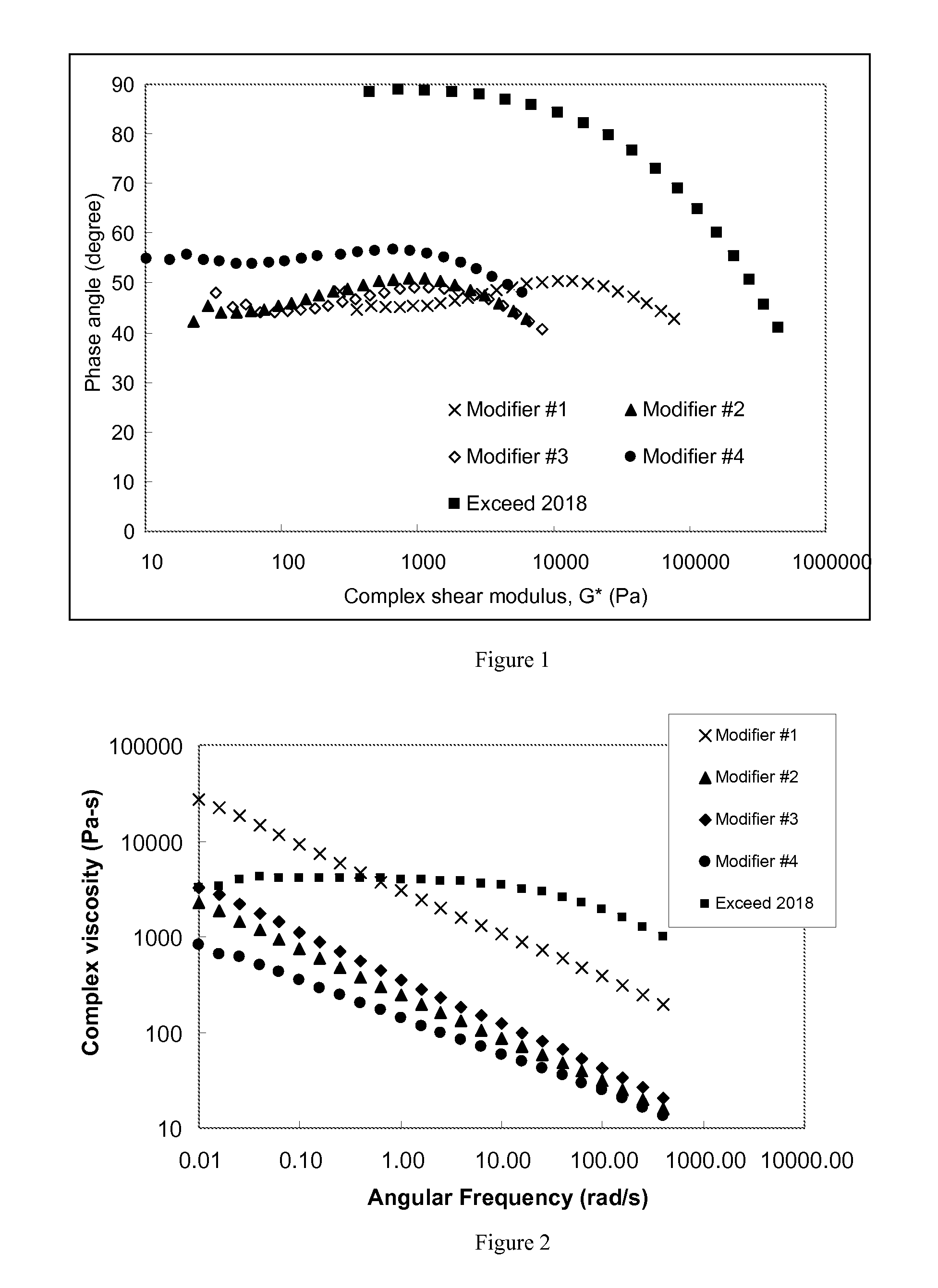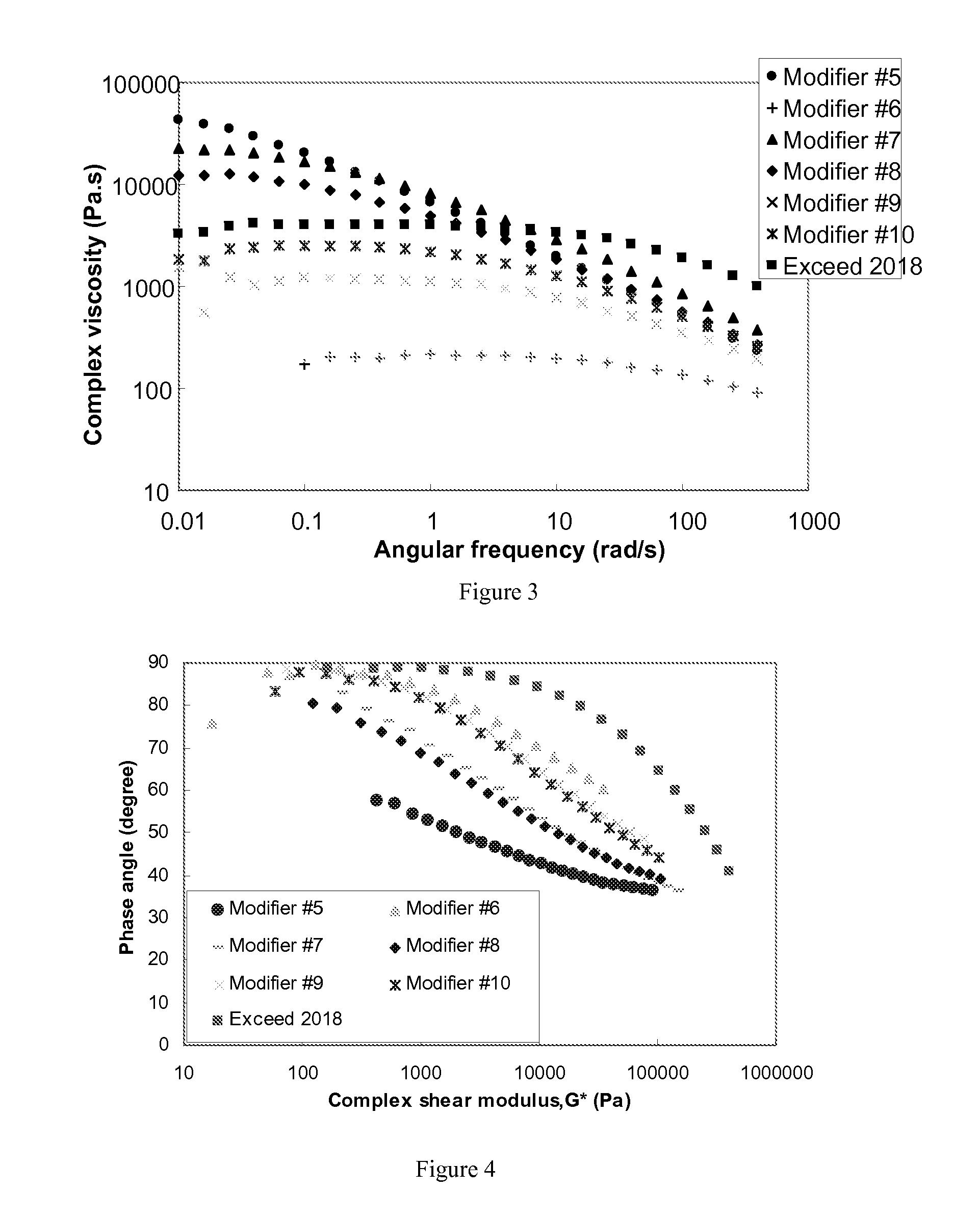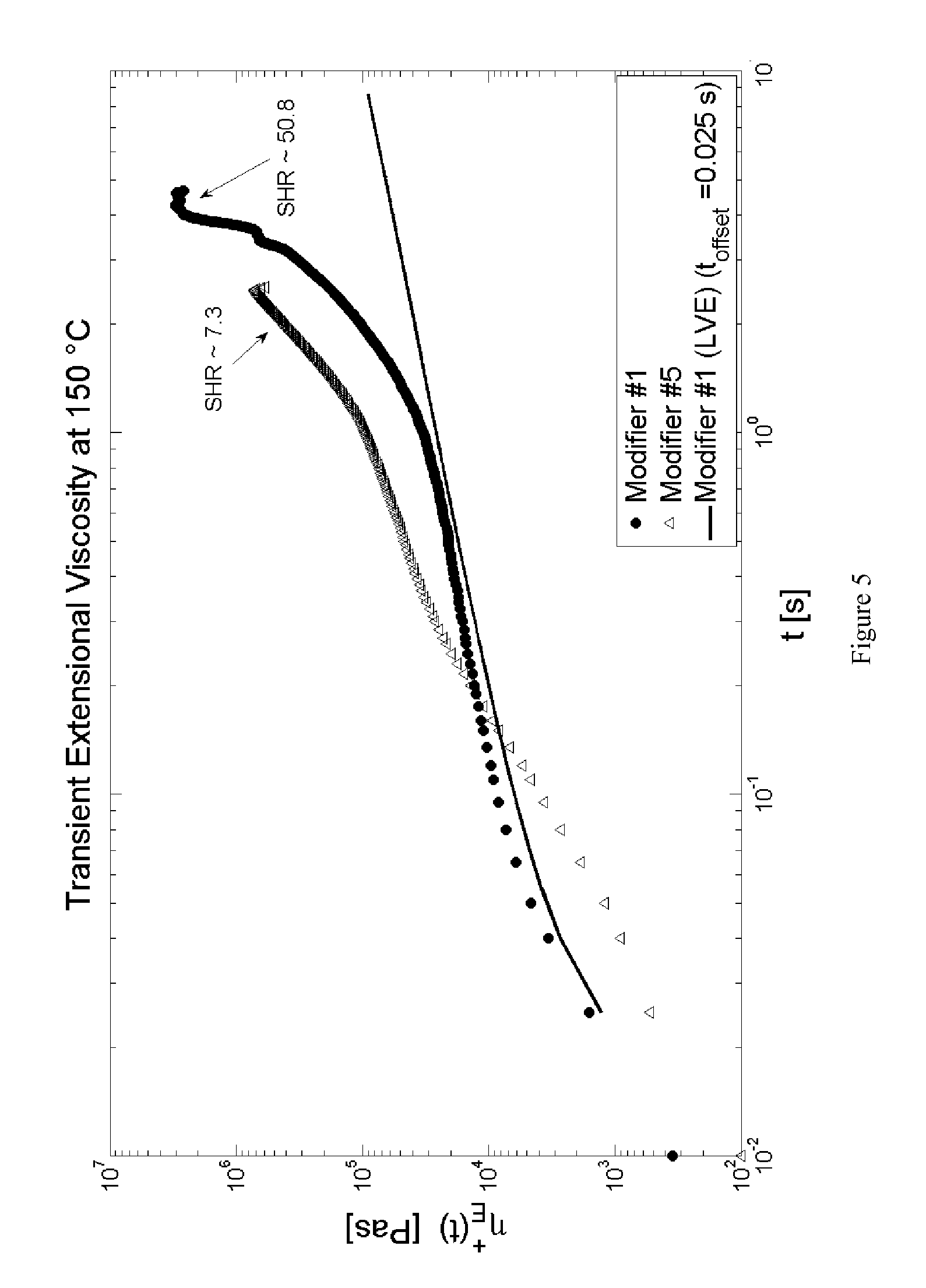Modified Polyethylene Compositions
a technology of polyethylene composition and modified polyethylene, which is applied in the field of polyethylene composition, can solve the problems of mpes having lower melt strength, affecting the stability of bubbles, and being somewhat more difficult to process
- Summary
- Abstract
- Description
- Claims
- Application Information
AI Technical Summary
Benefits of technology
Problems solved by technology
Method used
Image
Examples
examples
[0316]The present invention, while not meant to be limited by, may be better understood by reference to the following examples and tables.
examples 1 to 4
[0317]Four branched modifiers were produced in a 1-liter Autoclave reactor operated in a slurry process. The reactor system was equipped with a stirrer, an external water / steam jacket for temperature control, a regulated supply of dry nitrogen, ethylene, propylene, hydrogen and a septum inlet for introduction of other solvents, catalysts, liquid monomer, and scavenger solutions. The reactor was first washed using hot toluene and then dried and degassed thoroughly prior to use. All the solvents and monomers were purified by passing through a 1-liter basic alumina column activated at 600° C., followed by a column of molecular sieves activated at 600° C. or Selexsorb CD column prior to transferring into the reactor.
[0318]Dimethylsilyl-bis-(tetrahydroindenyl)zirconium dichloride was used as metallocene Catalyst A. The metallocene was supported on silica particles according to the procedure described in U.S. Pat. No. 6,476,171 B1. In brief, a solution of 1300 ml of 30 wt % alumoxane (MAO...
examples 5 to 13
[0326]Branched modifiers in Examples 5 to 13 were made in a continuous stirred-tank reactor operated in a solution process. The reactor was a 0.5-liter stainless steel autoclave reactor and was equipped with a stirrer, a water cooling / steam heating element with a temperature controller, and a pressure controller. Solvents and comonomers were first purified by passing through a three-column purification system. The purification system consisted of an Oxiclear column (Model # RGP-R1-500 from Labelear) followed by a 5A and a 3A molecular sieve column. Purification columns were regenerated periodically whenever there was evidence of lower activity of polymerization. Both the 3A and 5A molecular sieve columns were regenerated in-house under nitrogen at a set temperature of 260° C. and 315° C., respectively. The molecular sieve material was purchased from Aldrich. Oxiclear column was regenerated in the original manufacture. Ethylene was delivered as a gas solubilized in the chilled solven...
PUM
| Property | Measurement | Unit |
|---|---|---|
| mol % | aaaaa | aaaaa |
| wt % | aaaaa | aaaaa |
| density | aaaaa | aaaaa |
Abstract
Description
Claims
Application Information
 Login to View More
Login to View More - R&D
- Intellectual Property
- Life Sciences
- Materials
- Tech Scout
- Unparalleled Data Quality
- Higher Quality Content
- 60% Fewer Hallucinations
Browse by: Latest US Patents, China's latest patents, Technical Efficacy Thesaurus, Application Domain, Technology Topic, Popular Technical Reports.
© 2025 PatSnap. All rights reserved.Legal|Privacy policy|Modern Slavery Act Transparency Statement|Sitemap|About US| Contact US: help@patsnap.com



